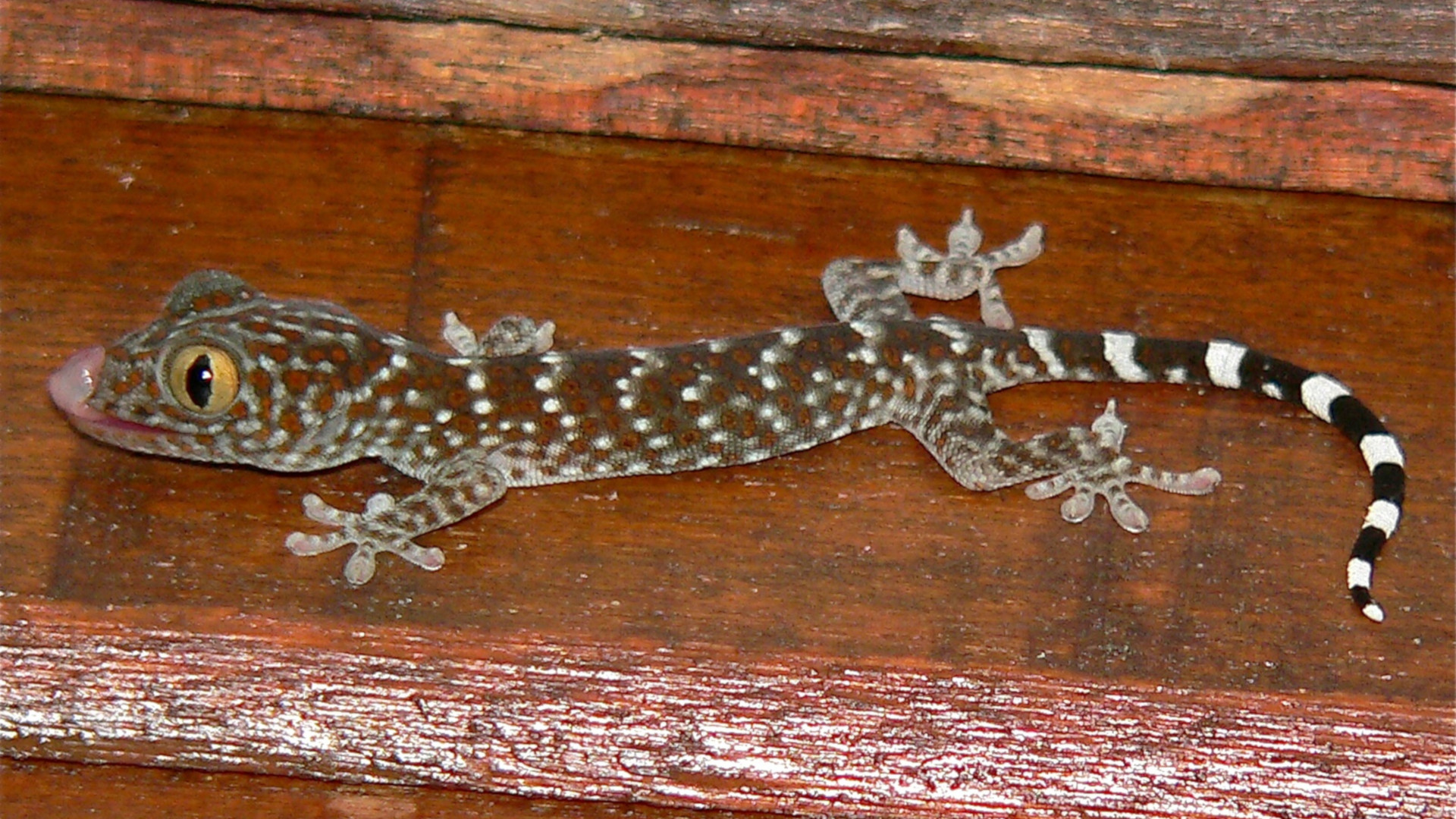One of the most heavily trafficked animal species on the planet, the tokay gecko (Gekko gecko), got an important boost last month when the Convention on International Trade in Endangered Species of Wild Fauna and Flora (CITES) agreed to regulate any future trade of this species.
CITES, a treaty signed by 183 member nations, aims to ensure that international trade in wild animals and plants doesn’t threaten their survival. In this case tokay geckos were included in what’s known as CITES Appendix II, which places controls on trade. The proposal to list the species came from India and the Philippines, two of the 15 countries where tokay geckos live in the wild. They were joined on the proposal by the European Union and the United States, acting mainly as importers of tokay geckos.
As we previously discussed, the Appendix II proposal stemmed from concerns that large-scale and almost completely unregulated trade in tokay geckos from South and Southeast Asia to East Asia would lead to a significant decline in wild populations. Already some countries have reported declines and localized extinctions, something this new regulation will hopefully help to stem or even reverse.
Appendix II: What Does This Mean?
Despite what’s claimed and even feared by some individuals and organizations, listing a species in Appendix II of CITES does not equate with a trade ban. Instead, species on Appendix II may be traded under a permitting system that allows for regulation and opportunities to track and analyze trends. This provides an early warning system if wild populations begin to decline further.
Appendix II is valuable because illegal trade in non-listed species is difficult, if not nearly impossible, to track. For one thing, the trade in plant and animal specimens is usually accepted at face value by consumer states, as there’s no easy mechanism to formally recognize whether a commodity was legally or illegally sourced without contacting the authorities or exporters in range states for each and every shipment. On top of that, some countries do not have legislation that allows for them to block any trade in illegally sourced species that aren’t already listed under CITES. With the CITES Appendix II permitting system such a mechanism is in place; if there’s no permit from the exporting country, the shipment should be deemed “not legal” and should not be allowed to continue. Simple.
And yet, there are still those who oppose listing species in Appendix II.
Obviously, some dealers and officials oppose a CITES-listing due to the increase in paperwork and administration. But the real concern is money. For financially motivated individuals not concerned with sustainable trade or the conservation of species, any limits are a frustration.
We’re already hearing some of these complaints from tokay gecko dealers and officials in range countries.
But there are obvious benefits, not just to wildlife but to officials and law enforcement.
Most notably, listing species in Appendix II helps source countries to enforce their own domestic legislation or ensure that traders abide by nationally set quotas.
For example, in India, tokay geckos are legally protected, and no export is allowed, but without a CITES listing it’s nearly impossible to enforce this national legislation once the animals have illegally left the country. Appendix II strengthens India’s internal laws.
Indonesia, another range country, does allow export of tokay geckos, but it has set a limit on the number of individuals that can be harvested and exported. Approved exporters are obliged to indicate on each export permit how much of their allotted quota remains. If quotas are exceeded, importing countries are beholden to inform Indonesia and assist in preventing the trade in the illegally-exported extra animals. In this case, Appendix II listing reinforces Indonesia’s existing quotas and will help to ensure that wild populations are not overexploited.
For those that want trade in tokay geckos to be sustainable — and thereby avoid the potential need for all-out trade bans — listing the species in Appendix II is key.
What Next?
The new CITES listing goes into force this December, after which all export of tokay geckos must be accompanied by a permit. Countries will report their annual quotas for the number of wild-caught specimens and all countries exporting, re-exporting and importing tokay geckos are obligated to provide annual reports to the CITES Secretariat.
As with all other CITES-listed species, these records are maintained in the CITES Trade Database, which is open for all to see and use. This important resource allows governments, conservationists and anyone else who’s interested to monitor trends and identify potential abuses. It also provides an early-warning system for population declines. The permitting system will allow countries to seize any tokay geckos in international trade that are not accompanied by a CITES Appendix II permit, in the process supporting source countries’ efforts to protect wild populations and regulate sustainable trade.
We applaud the CITES parties’ decision to include the tokay gecko in Appendix II, showing once again that the treaty deals with more than just well-known megafauna such as elephants, rhinos and tigers. In the coming years we’ll keep a close eye on the import and export of this species, and we eagerly await the first annual report to be submitted to CITES for hard data to help us with our analyses. In the long run, and possibly even sooner, we hope to see the current decline of wild tokay geckos begin to reverse itself and look forward to seeing the species’ presence in illegal trade also start to decline.
The opinions expressed above are those of the author and do not necessarily reflect those of The Revelator, the Center for Biological Diversity or their employees.




